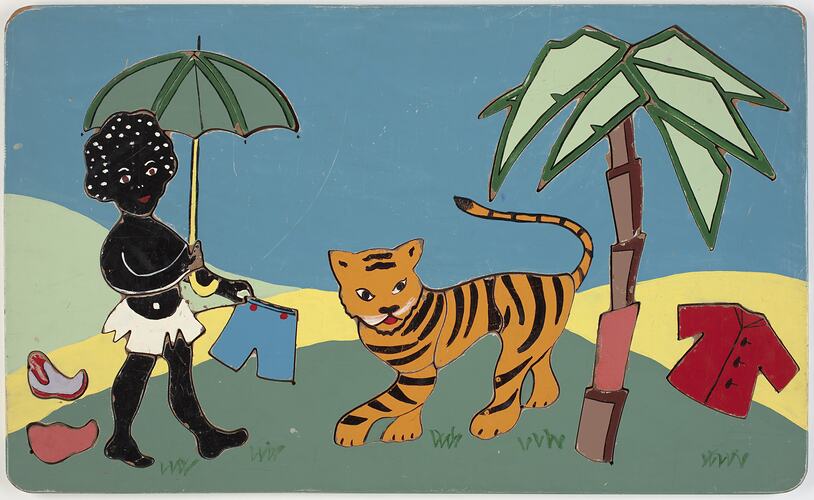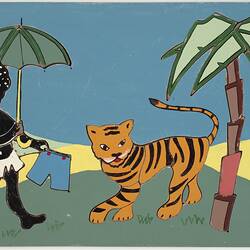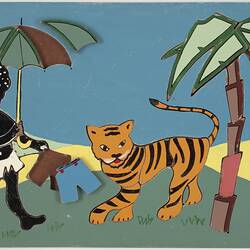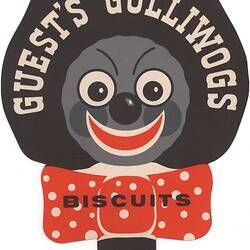Summary
Note: This object includes a derogatory depiction of a particular cultural group. Such depictions are not condoned by Museums Victoria which considers them to be racist. Historical distance and context do not excuse or erase this fact.
Masonite puzzle of the nursery story 'Little Black Sambo', made circa 1950s to 1960s. It was used at Warrawong Day Care Kindergarten from the 1950s onwards.
The story of 'Little Black Sambo' is a children's book written and illustrated by Helen Bannerman, and first published by Grant Richards in October 1899. Sambo is an Tamil boy who encounters four hungry tigers, and surrenders his colourful new clothes, shoes, and umbrella so they will not eat him. The tigers chase each other around a tree until they are reduced to a pool of melted butter; Sambo then recovers his clothes and his mother makes pancakes with the butter. The story was a best seller until the 1930s and 1940s when the word sambo was deemed a racial slur, and the illustrations racist.
In 1942 a re-illustrated version was released in the USA, and during the mid 20th century several American editions changed the title to the racially neutral Brave Little Sambo. The book has continued to be reworked and released in 1996, illustrator Fred Marcellino produced a re-illustrated version, 'The Story of Little Babaji', which changes the characters' names but otherwise leaves the text unmodified. In 2003 a version using the original title and text with more culturally sensitive illustrations was released and was chosen for the Kirkus 2003 Editor's Choice list.
Little Black Sambo books and related games were also available in Australia.
Physical Description
Rectangular puzzle which is made out of masonite. It has twenty-six pieces which create an image of the child 'Little Black Sambo', a tiger and a palm tree. The scenery is rendered with blue sky, green and yellow terrain, and green grass at their feet. Little Black Sambo's clothes (two shoes, blue shorts, and a red jacket) are strewn across the image.
Significance
Statement of Historical Significance:
This item is part of the Museum's collection of material which explores themes of cultural stereotyping through popular culture. This record extends the collection's representation of this historically popular and serially re-invented children's story which has been the focus of controversy in the US and other countries including Australia for its cultural representations and use of the word 'sambo' now considered a racial slur.
More Information
-
Collecting Areas
-
Acquisition Information
Donation from Association of Graduates in Early Childhood Studies (The), 19 Dec 2002
-
User
Warrawong Day Care Kindergarten, New South Wales, Australia, post 1950s
-
Date Made
-
Inscriptions
Handwritten on side: NURSERY STORIES - LITTLE BLACK SAMBO
-
Classification
-
Category
-
Discipline
-
Type of item
-
Object Measurements
456 mm (Length), 278 mm (Width), 8 mm (Height)
-
Keywords
Children's Play, Ethnic Groups, Puzzles, Racial Identity, Toys, Cultural Stereotypes, Racism





